"We are an Easter people and ALLELUIA is our song!" The Cross of Pain has become the Cross of Glory. The Man who was humiliated, mocked and tortured has triumphed over all. The Alpha and Omega has spoken and acted. Sin has been defeated and death overcome, because Jesus the Christ is risen today. Now, with all of creation, we can proclaim together, "O Death, where is your victory? O Death, where is your sting?" (1 Cor 15:55) Our God is not dead. He's alive! He's alive! Our journey of 40 Crosses for 40 Days is now at an end. We have traveled within ourselves, with others also on the road, with the saints and with Christ Himself, walking step by step, day by day, to the hill of Calvary, joining with the suffering and death of Jesus so that we, too, can rise with Him today. We have arrived at our heart's desire - the Easter Cross of Glory, the promise of life with God in that place where every tear will be wiped away, where there shall be no more death or mourning, no more wailing or pain, because the One who sits on the throne declares "Behold, I make all things new." (Rev 21:4-5)
Let us pray: Holy God, we praise Your name! Lord of all, we bow before You! Saints on earth, Your scepter claim. All in Heaven above adore You. Infinite, Your vast domain, everlasting is your name. Infinite, Your vast domain, everlasting is Your reign!
0 Comments
This year, Lent begins on February 14, aka St. Valentine’s Day. In case you have yet to discern the way God is inviting you to travel through the next 40 days with Him, here are some resources that can help.
The Amen App from the Augustine Institute is completely free. This year, they are providing a daily email meditation from The Tears of Christ, by St. John Henry Neuman. Additionally, each week an audio drama for kids plus a lectio divina meditation from the Sunday readings will be sent out. Go to Amen for more information or download the app from the App store. Pray40 on the Hallow app. The internationally known Hallow app is offering a Lent meditation of the book He Leadeth Me, by Fr. Walter Ciszek. Fr. Ciszek recounts his 23 years in Russian prisons and labor camps in Siberia, and how he was able to develop a profound prayer life that gave him hope, courage and a path to the heart of God, finding peace and purpose in the worst conditions. Many of the features on the Hallow app are available for free. There is also a paid version for $9.99 a month or $69.99 a year ($6 a month) Sign up by going to: Try Hallow Bonus: There are plenty of Lent resources available on the Hallow website, in case you prefer to stay off of apps. Go to Lent 2024: The Complete Guide to the Catholic Season of Lent – Hallow for prayers, to learn the Biblical roots of Lent, changes in the liturgy and much more. ‘My father’s Father’ on Wild Goose TV. Perhaps this is the Lent that God is calling you to examine the idea of fatherhood and to reflect on the fathers and father figures in your own life, especially if those have been turbulent relationships. Wild Goose TV has released a six episode series called My father’s Father, which explores topics like “A Good Father", " Priestly Fatherhood" and "The Father Waits". Hosted by Fr. Dave Pivonka, TOR, this series can be watched for free on the Wild Goose app, or online at Wild Goose TV streaming platform Donations happily accepted. Advertisement - Continue Reading Below The Sorrowful Rosaries on Wild Goose TV. Just in time for Lent, a new video series on the Sorrowful Mysteries has been released, also on the Wild Goose app. Filmed on location in the Holy Land as well as parts of the US, this series integrates art, music, theology and prayer to make the rosary come alive. Stream it on the Wild Goose app or watch it at https://wildgoose.tv Exodus & Exile at the St. Paul Center’s Emmaus Academy. Journey through Lent with popular speakers Dr. Scott Hahn and Dr. John Bergsma as they work through the book of Exodus. Taking a chapter a day, listen to Dr. Bergsma unpack the journey of the Israelites from slavery to freedom, then see if you can do his daily challenge. Dr. Scott Hahn offers 8 weekly talks to help us focus on our return to our heavenly home. A complimentary Lenten devotional, Journey through Lent, is also included. Sign up at: Exodus & Exile – St. Paul Center Bonus: You’ll get all access to the entire St. Paul Center’s Digital Content for free until April 8. Advertisement - Continue Reading Below Pray with the Oblates of Mary Immaculate. Join the Oblate family around the world with a series of short, daily reflections. Offered freely as a sign of gratitude to the co-missionaries of the Missionary Oblates, this ebooklet helps us focus our hearts and minds on what is truly important. Sign up at Daily Lenten Reflections Pray with Catholic Extension. Lift people around the US up in prayer by listening to their stories. These short video reflections are on Ash Wednesday and each of the Fridays in Lent. Listen, pray and remember those in our country who are helped by Catholic Extension. Sign up or watch at Catholic Lenten Reflections - Video Series by Catholic Extension Pray with Loyola Press. Catholic publisher Loyola Press offers a series of reflections called Living Lent Daily, based on the book God’s Voice Within, by Mark E. Thibodeaux, SJ.These reflections are especially geared around discernment, decision-making and listening to the voice of God. Sign up at Living Lent Daily | Loyola Press Bonus: Register for the free webinar 'Journey Through the Life of Jesus: A Lenten Webinar with Andrea Tornielli and Sr. Bernadette Reis, FSP' and gain insight into seeing Lent through the eyes of Christ. Register at Webinars | Loyola Press Make this the Best Lent Ever by joining Dynamic Catholic in a spiritual journey to Eucharistic Consecration. In these years of the Eucharistic Revival, draw close to God in the Eucharist. Sign up at: https://dynamiccatholic.com/lent.html Finally, contemplate the cross of Christ with ‘40 Crosses for 40 Days.’ This is my own Lent offering. In addition to journeying with many of the resources above, one of my Lent offerings to the Lord is to write a short (possibly very short) daily reflection on images of crosses. Each day will feature a different image of a cross with a reflection and a prayer. I will publish both here and here on my blog, The Strawberry Vine My hope is that by focusing on the many different artistic and/or naturally occurring crosses each day. I’ll be able to see THE cross from a myriad of perspectives on Good Friday and Easter Sunday. Please follow along and keep me accountable! In the words of a priest I once heard at a conference many, many moons ago, “It doesn’t matter what you do. Just do SOMETHING!” Pick one or two options that speak to you, and make this Lent one in which something, even something very small, changes within you. Today, February 2, we celebrate both the Presentation of Jesus in the Temple and the Purification of Mary. In many parts of the world, today’s feast day is simply called Candlemas, and it officially ends the Christmas - Epiphany season. Candlemas is especially connected to the blessing of candles, which is a natural drawing out of the meaning of the presentation and the purification. Scripture tells us about Jesus’ presentation in the Temple when Joseph and Mary fulfilled the Mosaic law by dedicating their firstborn son to God. The Gospel of Luke says that “when the days were completed for their purification according to the law of Moses, they took him up to Jerusalem to present him to the Lord, just as it is written in the law.“ (Luke 2:22-23) Once in the Temple, the priest Simeon receives infant Jesus and proclaims, in great joy, that “My eyes have seen [God’s] salvation, which you prepared in sight of all the peoples, a light for revelation to the Gentiles and glory for your people Israel.” (Lk 2:30-32) Simeon, knowing through the Holy Spirit that the child he is holding is the long-awaited Messiah, immediately starts talking about light; light in his eyes to see, a light by which all people can see, a light that will be a revelation to the Gentiles as well as the luminous light that surrounds God’s glory. That’s a lot of light! Luke’s Gospel then talks about the prophetess, Anna, a holy woman “who never left the temple, but worshiped night and day with fasting and prayer.” Anna and Mary had a lot in common. Mary was the temple of God for nine months, and like Anna, she was certainly praying (though not likely fasting) and worshiping God without ceasing. Anna, in her role of a prophetess, gives thanks to God and speaks about the infant Jesus “to all who were awaiting the redemption of Jerusalem.” (Luke 2:38) Like Simeon, she, too, was prompted by the Holy Spirit and recognized the Light of the World was in their midst. Since Scripture talks so much about light in these short passages, it makes sense that over time, faithful Christians came to associate the Presentation of Jesus and the Purification of Mary with candles, and their steady, warm glow that chases away the dark. Even today, candles remain a symbol of illumination and sight, despite electricity. So, how can we bring Candlemas to life in our own lives? Here are a few ideas. In Our Homes Many parishes have services where candles can be brought to church for a special blessing. Check to see if your parish is offering this blessing, and stock up on blessed candles to use at home this year. At home, start by experiencing a lack of light. Choose a small space or room to gather in. Shut the door. Close the blinds. Turn lamps and lights off but bring your phone to use as a timer and a flashlight. Make the space as dark as possible. Time how long you (and your kids) can sit in the dark. Close your eyes and imagine how the Israelites longed, for thousands of years, for the light to come into the world. Imagine there are no lights to turn on, just continuing darkness. How important would even one candle be in the face of so much darkness? Turn on your phone or other small light and notice how comforting that small light is. In Ourselves Now imagine that the darkness you experienced is inside yourself. Pretend you are like Anna in the Temple. Wander around an interior space, maybe even imagine you are somewhere that looks like the Temple from Jesus’ time. What are the shadowy, dark spaces you notice? Now picture yourself near a Baptismal font, receiving a Baptismal candle that has been lit by the Paschal candle. Holding the lit candle, shine it into one of the dark spaces you noticed. Ask the Holy Spirit to help you see where you need the Light of God. Resolve to carry that lit Baptismal candle internally with you everywhere you go. In the World We know that many places and situations in the world are threatened by darkness. Think about the corner of the world you interact with each day. Where are you called to gently shine the Light of God in a welcoming, inviting way? Can you connect with others who are also trying to shine the Light of God, and together increase your luminosity? Perhaps choose one specific shadow where you can shine the Light, knowing you are not alone but that Jesus and Mary are with you.  This mini Whimsical Waffle maker ornament is ready to work its magic. This mini Whimsical Waffle maker ornament is ready to work its magic. At Our Tables Besides providing illumination, candles do one other thing. They emit a small flame, and that tiny burning fire gives off a bit of heat. When heat is applied to various things, it can change them. Tha fourth idea for celebrating Candlemas is to participate in the long-held tradition of eating crepes! Waffles will also do, if that's easier. As the pictures of the waffle maker above depict, what starts out as a gloopy, unformed liquid becomes detailed and solid when heat is applied. The waffle batter becomes food, sustenance for the journey. So on this special day, treat yourself to a serving of crepes, waffles or pancakes, and consider how they are each formed by heat and pressure into something useful, just as the heat and pressure of the Christian life forms us, if we will allow ourselves to be molded by it. So, there are four simple ways to celebrate Candlemas. But most importantly, remember the words of Scripture that proclaim, “the light shines in the darkness, and the darkness has not overcome it,” (John 1:5) and like Simeon and Anna, give thanks, praise, and worship to God for sending us the Light of the World.
Here we are, almost at the beginning of another year, all fresh, shiny and full of promise. If you are like me, you stand at the threshold of the new year and resolve to make some changes. Do you want to make an effort to get out more in 2024? See more? Do more? Just generally BE more? But if you've made a resolution to do something different this year, how do you actually go about doing it? Work pressures are still the same. Family needs and responsibilities are still the same. People and organizations who depended upon you in 2023 will still need you in 2024, maybe even more. In other words, how do you make a change? Here's one easy (and enjoyable) suggestion: Try the World! Sign up for a monthly subscription snack box and experience a little of the great big world in your own home. Each month, a box like the one pictured below arrives at your home (or whatever address you provide). Inside, the box is stuffed full of snack-sized goodies that actually-and I mean literally- give you a taste of other countries and cultures. I received a sample box from Try the World, and it arrived well packed, as shown above. I took the green Try the World box out, opened it up and this is what I saw. Looks interesting, right? (Especially that bit about winning an international vacation!) I removed each of the items and gave them a close examination. Here's a better photo of everything that arrived in this one box: Thirteen different items from 11 different countries! The items ranged from ground coffee from the Dominican Republic to Lychee Gummy candy from Japan to a Banana Boost bar from Brazil and a Guava Nectar drink from Egypt. There were also cookies from Argentina, gummies from Colombia and even a stick of black licorice from Finland. (Plus another six items!) Just a smorgasbord of treats from all over the world. But even though the Try the World box says it is a box of snacks, that does not mean it's only enough food for one person. On the contrary, and I think this is one of the very best things about the Try the World boxes, they actually contain plenty of food for several people. It's more like an adventure and an invitation in a box, than just a bunch of snacks in a box. I shared the one box above with my family during the holidays and it was a huge hit! We read about each item and then found its country of origin on a map. It was a great experience for us, and that brings me to my next point. Who Should Subscribe to "Try the World?" As I mentioned above, each box contains enough food for several people. Because of this, the Try the World snack boxes are perfect for three groups of people in particular.
1. Parents of College Students At my parish, we collect names and addresses of our college students and send them care packages. We stuff boxes full of snacks, prayer cards and even some letters from our younger students, all to remind our college students that, although they may be far away, they are still very much in our hearts and prayers. Every time that we have sent out these college care packages, we always receive an overwhelming response from our young adults. They simply love them. They don't feel alone. They know they are not forgotten. Just imagine if they received a care package like this each month?!! Wow, what a difference that would make to them; what a connection they would feel. And remember those late-night cram sessions, fueled by coffee and ramen? A Try the World snack box beats that menu hands down and might also give some encouragement and sustenance to roommates and friends living nearby. What a great way to gently stay in touch with a child far from home. 2. Anyone with a Loved One in an Assisted Living Facility It is a tragic statistic that close to 90% of people who live in nursing and assisted living facilities do not receive visitors. Ever. This is due to many different reasons of course, and my point here is not to point a finger or lay blame on anyone. Sometimes jobs take children far away from their elderly parents and they just can't physically get there. Sometimes, it is true, there have been significant disagreements between parent and child, and those disagreements have not been resolved. If nothing else, a Try the World box can work as a peace offering, if that's the case, or an "I Love You and I'm Thinking of You" reminder. Interestingly, a great deal of elderly folks don't have any dietary restrictions and they like cookies and gummies as much as we do. Additionally, they like to share their treats with their friends and tell them that "This is from my son/daughter/niece/nephew/cousin/anyone else." So, receiving a Try the World box each month would truly be a celebration, a high point among days that are very much the same. 3. Families Wanting to Live the Liturgical Year Lastly, Try the World boxes are a fun and affordable way to learn about saints from other countries and some foods that are similar to what they might have eaten. The subscription service for Try the World offers the option of curating which countries you would like to visit the most. Although the specific items each month are chosen by the company, there are so many saints from so many different places around the world that it's pretty easy to choose a couple of saints and learn more about them that month. Pick one item from one country and then choose a saint from that country to learn more about. See how many saints you can match to the countries the items are from! What are the Details? As I mentioned above, a Try the World monthly box subscription is affordable. There are three different sizes of boxes: small: 7-9 snacks - as low as $25/month medium: 12-14 snacks - as low as $40/month large: 17-20 snacks - as low as $55/month There are also several options for the length of your subscription: one month (one time purchase) three months (3 boxes) six months (6 months) a year (12 boxes) For more information and to start your journey visit Try the World at https://trytheworld.com Make 2024 the year you explore more of the world, send some love to the important people in your life, or gather together to enjoy a bite of life from other parts of the world. You may not make a big world trip this year, but that doesn't mean you can't still taste some of it. Make this the year you Try the World! Vrroommm. Grrrrunnnn. It was 4:00am and the sound of the tractor outside in the fields woke me up. Squinting into the darkness, I could see that the sun still wasn’t up, and wouldn’t show its face for another few hours. Even then, it would be a pale, watery thing, not the bright, happy sunlight we enjoyed in summer.
Wrapping a blanket around myself, I got up and walked to the window, looking out. The headlights of the tractor outside moved across the fields, wandering over the small hills and dales. I knew our neighbor, Ben, was out in the cold, sitting in the seat of that machine, wearily going back and forth in the dark, following the row of corn to the end of the field, then turning around to come back. Not swerving, just following the lines, so that as much of the crop could be brought safely in as possible. I had spoken to Ben just the day before. He and his family ran the small dairy farm across the road from us, and we rented our land to them. They grew corn and soybeans and every year around early November; the same mantra arose. “We’ve got to get the crops in before it snows.” That pressing, hurried urgency was in every conversation with them. All the work could be lost if they didn’t hurry, hurry, hurry and get the crops into the barn. There was no stopping and very little rest for them during this time, just one overriding, recurring thought - “we’ve got to get the crops in.” Although we have since moved away from our home in the hills and our dairy farmer friends, I always think of them at this time of year. As the days grow shorter and the temperature drops, the Mass readings also change. Just as my dairy farmer friends knew that it was time to go out and gather in all of their work, to harvest what was good and to avoid the patches of weeds and rocks, Scripture tells us to prepare for the same thing. Now, in our churches, we turn our attention to the end times, to the great ingathering of all the faithful into the home of our Lord. Just like my friend Ben, tracing his solitary way in the dark, getting the corn and beans in before the onslaught of the winter, Scripture tells us that “Thus it will be at the end of the age. The angels will go out and separate the wicked from the righteous.” (Mt 13:49) and that “The harvest is the end of the age, and the harvesters are angels.” (Mt 13:39) There’s nothing quite like standing in the dark, watching a farmer race against time, the cold and the elements to bring home the reality of those words of Scripture. The end times are coming, whether that’s on a global scale with Jesus’ return or simply the drawing to a close of our own individual lives. The angels will go out because they’ve got to bring the good crop in. The crops of wheat, corn and soybeans are in the fields, ready to be harvested. The end times are coming. Nature reminds us of this truth. The Church reminds us as well. During the month of November, we pray for the gathering of the crop of people by praying for those who have passed away. We believe that we are still united to them through the Communion of the Saints and we recall our deceased relatives, friends and all the faithful departed who may yet be waiting for the full joy of heaven. We write their names into the Book of the Names of the Dead and we might also visit cemeteries for the same reason, to offer prayers and remember them, because we’ve ‘got to get the crop in.’ As the leaves fall and crunch underneath, as the sun sets earlier and the days are shorter, we would do well to remember that the end times are coming, and to add to the Lord’s crop by praying for all those we love - and those we find hard to love - and to do our part in the harvesting. Most of us have heard the name C.S. Lewis before. We may have come across him in our childhood, reading the ever-popular story The Lion, The Witch and the Wardrobe, or perhaps The Horse and His Boy. Both of these works are from the Chronicles of Narnia.
Many people encounter Lewis through his other writings, such as Mere Christianity, or his Space Trilogy. Although Lewis is well known for his imaginative works, he wrote many more lectures, essays and books of non-fiction than he did of fiction. He wrote so much, in fact, that it's a serious task to try to get through them all. Lewis often said that he was not a “professional theologian,” and he hoped his audience at large would forgive him for jotting down his theological reflections. And it is in these same books and essays of reflection that the three things he held most dear - orthodox Christianity, classical reason and his own particular version of romanticism - are most clearly explained. In fact, they provide the vision behind things like the great lion, Aslan, in Narnia and the fantastic voyage of the Dawn Treader. If you’ve ever been delighted and enchanted by a journey to Perelandra (from Lewis’ Space Trilogy,) or imagined Reepicheep the mouse sailing away to the “utter East” and wondered what it all meant, the new book Not A Tame Lion, The Life, Teachings and Legacy of C.S. Lewis, by Terry Glaspey, was written just for you. Glaspey notes that, while there have been many books written about Lewis, his book is meant for the average reader who knows a little about Lewis and would like to know more. Just as the title promises, this handy book starts off with a short Chronology of Lewis’ life, then tells the tale of his life. Readers will learn about Lewis’ childhood and fall into atheism, and also find out what brings him back to Christianity, even to becoming one of the most well-known and popular apologists. The second part of the book explains Lewis’ teachings. Lewis was by trade a university professor, and Glaspey does a fine job of tracing Lewis’ ideas and thoughts, many of which were delivered in lecture halls and on the radio. Readers come to understand why Lewis valued the role of the “baptized” imagination so highly, and why he and fellow author J.R.R Tolkien felt compelled to write their now world-famous stories. The book ends by noting the legacy left behind by Lewis, one that continues to endure and is even enjoying a revival today. There is also a complete list of all of Lewis’ works, and the year they were published. Additionally, a Selected Bibliography gives many resources for anyone who would like to learn a little more. As Glaspey himself writes, Lewis “is a writer whose insight is so well balanced with his wit that he always says it better than I could paraphrase it. If the result of reading this book is to awaken a hunger to read some of his books for yourself, then I have accomplished my task.” (p.11) Not A Tame Lion: The Life, Teachings, and Legacy of C.S. Lewis is clearly written and gives the reader easy access into the mind of one of the most important apologists in recent times. Available for around $15.00 this book is worth a read for anyone who has ever felt a strange stirring when reading the words “Aslan is on the move,” and wanted to know why. [This article contains Amazon affiliate links, which provide a small compensation to the author of this piece when purchases are made through the links, at no cost to you. Thank you for your support!] The Feast of the Archangels Michael, Raphael and Gabriel is almost here! We will remember these heavenly helpers on Friday, September 29. If you have young children in your home, be they grandchildren, nieces, nephews, neighbors or your own, be prepared for the day by having The Children’s Book of Angels on hand.
Everyone loves angels. Not everyone knows that much about them. This short little book can help that. The Children’s Book of Angels walks the reader through basic questions like “What do angels look like?” and What do angels do?” and, most importantly, “How do angels help people?” The answers given are age-appropriate and easy for children to understand. Angels who appear in the Bible are connected to those Biblical stories. For example, St. Gabriel is pictured in original artwork announcing the good news to Mary, and St. Raphael is shown protecting Tobias on his dangerous journey. (The famous family dog is also shown!) Unnamed angels, such as the one who appeared to Elijah in the Old Testament and the angel who helped Peter in the New Testament, are also featured. Scripture quotes from each of these stories are highlighted with each angel. St. Michael is depicted as a powerful ally who is always ready to come to our aid, while the topic of demons and the devil is presented in a realistic, but not terrifying way, and the Prayer to St. Michael is also included. This is a nice bonus, as children can start to memorize it. The Guardian Angel Prayer is also included on the page about the Guardian Angels. One of the nicest features about this book is that it includes an explanation of the nine different orders, or “choirs,” of angels, based on St. Thomas Aquinas’ understanding of them. Starting with the Angels, the book numbers the different celestial beings through the Archangels, Principalities, Powers, Virtues, Dominions, Thrones, Cherubim and Seraphim. Each choir of angels has a rough sketch accompanying it, and children are always very interested in seeing the round Thrones and the four-headed Cherubim. This helps them to see that angels are not simply humans who can fly, but that they are different from us, and some are very different indeed. The book ends by inviting the readers to go to Mass, so that they can join the angels in worshiping Jesus. It was written in 2019 by Jerry Windley-Daoust and Illustrated by Austyn Schwartzbeck. Published by Holy Heroes, LLC, (www.holyheroes.com) it is available for around $13 and is a good fit for upper elementary students. If you would like to invite those young, special people in your life to learn more about the holy angels - all nine choirs of them - this book is an easy way to do so. Make this the year that September 29 comes and you are ready to talk about St. Michael, St. Gabriel, St. Raphael and all the other angels God has created. One of the easiest ways to help us see the sacrifice of the Mass with fresh eyes and give us renewed vigor is to attend Mass somewhere other than our regular parish. Not only can we hear the homily given by a different preacher, we can also meet new brothers and sisters in the faith as well as be instructed by the sanctuary itself. As we know, everything in our holy spaces is full of meaning, from the statutory to the altar to the design and layout of the building itself. The architecture and design of every Catholic Church is highly intentional and theological and can illuminate an aspect of the Mass in a new way. This past weekend, I had the opportunity to attend a new-to-me church, and that was exactly what I experienced. I appreciated the wisdom of the pastor, I was welcomed by several parishioners and I was especially captivated by the rather striking sanctuary. This particular sanctuary, St. Paul the Apostle in Horseshoe Bay, Texas, followed closely the words of the Catechism, which says that “the ornamentation of a church should contribute toward its noble simplicity rather than to ostentation. Moreover, in the choice of elements attention should be paid to authenticity.” (CCC 292) The architect got it right, on both counts. The artist who was commissioned to create works of sacred art for the sanctuary, Sister Mary Peter Tremonte, O.P., made it easy for us to contemplate the work of God through the practice of Visio Divina, “divine seeing,” or praying with art. Jesus the Light of the World and the Living Water As you can see from the picture of the sanctuary (above), the backdrop of the altar is God’s own creation. Behind the altar is a large crucifix, animated by blocks of colored glass reflecting the Light of the World on the cross, while behind the blue sky stretches out, opening widely above Lake LBJ, which is made up of the joining of two rivers. Because the lake wraps around both sides of the altar, it looks as if the words of Genesis are being alluded to. Genesis says “A river rises in Eden to water the garden; beyond there it divides and becomes four branches.” (Gen 2:10) The reference to “four branches” reminds us that the fertilizing, irrigating water that will go out to cleanse the entire world, all four corners of it, arises in the temple, originally a garden, of God. We know that Jesus is the Living Water, whose blood flowed from him, mixed with water, at his death on the cross and that same mixture of blood and water flows forth across the world in every Mass. Jesus the Bread Come Down from Heaven
The sanctuary visibly showed us Jesus the Light and Jesus the Living Water, and in another piece of sacred art, it also reminded us that Jesus is the Bread Come Down from Heaven. At the apex of the roof is a beautiful work of original art, a mosaic that displays a sunflower-like sun reaching out. The petals of the sunflower, a symbol of obedience, take on the action of a sun as its rays turn into stalks of golden wheat, pointing in every direction. Just beyond the wheat is a green vine, the classic symbol of eternal life used since the earliest churches, joining with full-bodied purple grapes and orange and brown leaves, signifying the harvest. This work of art reminds us that the Eucharist which we gathered that Sunday to participate in, the bread of thanksgiving and the cup of salvation, invites us to become what we receive, to continue God’s work. Everything in this small space pointed to the glory of God, seen in both his creation outside and in the work of human hands, inside. One last note. When I read the history of this particular church, I was amused, but not surprised, to find that it originated from a gift of land and money donated by some early parishioners, who owned property on this steep incline. Guess what they had named this large hill? Thanksgiving Mountain. My daughter was named after her great, great aunt, whom we affectionately referred to as “Auntie Choot.” She was given this name by her 3-year-old nephew who thought she resembled a little chick or “chook,” but he couldn’t quite pronounce “chook” so for the next 6 decades or so, Edith Stephens was simply called Auntie Choot. She didn't mind.
Auntie Choot was a firecracker of a woman. Standing at a proud 4’ 11”, she told us stories of riding her horse to school as a young girl in the South Island of New Zealand. During one visit, I noticed she had a large bruise on her forehead. When I asked her what had happened, she laughed and said “It was so silly of me. I locked myself out of the house so I went around to the back and climbed in the bathroom window. I slipped on the floor and banged my head.” At that time, she was 95 years old. Her house was stuffed full of old paintings, furniture and bits and pieces of china. I especially remember all the cups of tea. Auntie Choot, like most Kiwis, loved her tea and averaged a good 5 to 6 cups a day. Tea was always brewed and served from a teapot into a dainty cup and saucer. “It tastes better in a beautiful cup,” she would say. Like the tea, Auntie Choot always made a big deal of the little things. It was how she chose to respond to a difficult life. Her husband was diagnosed with schizophrenia and she stayed with him, through the good days and the bad days. Her only daughter married a verbally and physically abusive alcoholic, and then died unexpectedly herself. Diagnosed with a heart condition, Auntie Choot had to sleep sitting up for the last 30 years of her life. No one could ever say she had an easy life. That’s what made her spirit so remarkable. She clung to her Catholic faith and to beauty, as two sure signs of better things to come. After she passed away at the age of 103, her possessions were divided among the family. My mother, who was like a second daughter to her, received quite a few items, including several sets of teacups and saucers. These were particularly special to us, since we knew they had been used by Auntie Choot herself. As my own daughter grew up, I would occasionally take a couple of these teacups out and have a cuppa with her, telling her stories about her great, great aunt. Although they never met, I wanted my daughter to know all about the wonderful woman she was named after. Time goes by and previous generations seem to slip further away. Yet, God is good and he sometimes reminds us that we are not as separated as we might think. My daughter, now a young adult, recently finished a Master’s of Music degree, with a concentration in Music Composition. As the final requirement for her degree, she had to present an hour of original music, performed live in front of an audience. Accordingly, she spent weeks working on this recital. She wrote the music, found the instrumentalists (a pianist, a violinist, a clarinetist and a cellist), and practiced her own parts on the bass clarinet. She coordinated with a dance/choreographer major to perform a solo routine. She found two opera majors to sing the words to one song, and a videographer and an actress to produce a short film for another. She wrote the program notes for her recital, detailing how she had been inspired by the poetry of Shel Silverstein to produce music that told a story, that tried to move listeners beyond the incessantly noisy landscape of today. Finally, she asked her dad and I if we could organize a small reception following the recital, to thank all those who had helped her and give the audience a chance to talk to the performers. Of course, we agreed. There was a full house the night of the recital, packed with some family and friends but mostly undergraduates from the university. I, like the rest of the audience, had not seen or heard any of the works before, just bits and pieces here and there as my daughter was practicing. The music began and it was simply a wonderful hour. We noticed especially that the 18 and 19-year-olds were not on their phones. They were listening intently, captivated by the dancing, drawn in by the passionate singing of the opera singers, watching the instrumentalists expertly whizzing through notes. The final piece of the evening featured a short video. Imagine my surprise as the film unfolded, reminding the viewer of our need to seek beauty in the everyday. But the last scene of the film brought tears to my eyes. There, on the big screen, was one of Auntie Choot’s cup and saucers. The shot showed a long stream of hot tea being slowly poured into the cup. The actress raised the cup to her face, closed her eyes and drew in a long breath. Then she took a sip, smiled and turned her face to the sun as the screen faded to black. At the reception afterwards, the young audience gathered around the artists, chatting and asking them questions. I was busy handing out food and drinks when I heard a young woman exclaim “Look! The cup and saucer!” Unbeknownst to me, my husband had seen Auntie Choot’s cup and saucer sitting on the table at home and had grabbed it at the last second, thinking it would add a nice touch to the table decor at the reception. The students gathered around it, looking at it as though it was a precious, rare thing. My mother, standing nearby, noticed and said “Auntie Choot would be so happy. Beauty was always her path to seeing God. These things were so important to her.” My daughter wandered over. “Edie!” I said, “You used one of Auntie Choot’s teacups!” She looked at me with surprise and said, “Of course, Mom. Don’t you know? Everything tastes better in a beautiful cup.” And just like that, all the years of time and all the miles of distance collapsed. We knew Auntie Choot was right there with us, lending her support and encouragement, helping us to find the beautiful in the ordinary moments of everyday life, just as she always had. How much she encouraged and guided us, how frequently her prayers of intercession aided us, only God knows. But I am sure that one day, in that future where all tears are wiped away, my daughter and Auntie Choot will embrace and sit down together, to enjoy tea in beautiful teacups. If you’ve ever given up a lot, worked really hard, and seen almost no fruit from all your efforts, then you’re in good company with St. Peter Chanel.
Born and raised in 1803 in France, St. Peter was one of eight children. He spent his early years as a shepherd, caring for the family flock, before his intelligence and serious manner were noticed by the parish priest. After spending a few years in the local school, St. Peter eventually made his way into the seminary and was ordained a priest in 1827. Although he deeply desired to be sent abroad to the foreign lands as a missionary, his first assignment was very close to home. Chanel was given the post of parish priest at the church in Crozet, a small town in eastern France. Even though this assignment was not the opportunity he had been hoping for, it was what he needed to prepare him for his eventual missionary work in Oceania. In the small parish of Crozet, Chanel discovered an empty church and an indifferent populace. Leaning into his natural kindness and simplicity, St. Peter approached the situation by giving special attention to the sick of the village. His care of and concern for the ill won over his parishioners, who noticed his zeal and sincerity, and this three-year assignment was considered a success. During this mission, Chanel learned that truly caring for the needs of the people and being concerned with the same things that concerned them was a very effective method of evangelization. His actions spoke much more loudly than any words. During his time in Crozet, St. Peter heard about a new order being formed by a group of priests. This order would be devoted to Mary, Mother of God, and in time would come to be known as the Marists, an order that is still at work in the world today. Chanel joined the Marists, who were later assigned to carry out missionary work in western Oceania, an area that includes Micronesia, Melanesia, Fiji, New Zealand, Samoa and Tonga. On December 24, 1836, Chanel set out on a nine month sea voyage with seven other Marists, headed for the other side of the world. After making some short stops at the Canary Islands, Tahiti and Tonga, Chanel settled into the island of Futuna. He would remain on this island until his martyrdom, a little more than three years later. On Futuna, the Marists were initially welcomed and so they began to learn the language and acclimate themselves to a very different culture and climate than what they had known. In fact, King Niuliki, the leader of Futuna Island, had only recently outlawed cannibalism. During these three years Chanel suffered from isolation and deprivation, but he chose to respond to his trying circumstances by exhibiting the same care and concern for the people of Futuna that he had shown in Cozet. Eventually, this began to succeed and some of the people were baptized. Unfortunately, as more people listened to Chanel and came to trust him and his message, the tribal king grew increasingly jealous. When the king’s son, Meitala, asked for baptism, King Niuliki responded with hostility and violence. Replying to the king with his characteristic charity, Chantel wrote “It does not matter whether or not I am killed. The religion has taken root on the island. It will not be destroyed by my death, since it comes not from men but from God.” Nevertheless, the king ordered his son-in-law, Musumusu, to stop the baptism using any means necessary. Musumusu visited Chanel with some other island warriors and killed him. St. Peter died on April 28, 1841. At first glance, it does not seem that all the effort and sacrifice St. Peter had undergone amounted to much at all. Yet within two years of his death, almost the entire island had converted and remains Catholic today. Even though St. Peter did not experience the fruit of his labor when he was alive, we have faith that he did see it after his death and that he continues to pray and intercede for the people of the South Pacific today. Chanel was canonized by Pope Pius XII in 1954 and is the patron saint of Oceania. The Church celebrates his feast day with an Optional Memorial on April 28. O God, who for the spreading of your Church crowned Saint Peter Chanel with martyrdom, grant that, in these days of Paschal joy, we may so celebrate the mysteries of Christ’s Death and Resurrection as to bear worthy witness to newness of life. Through our Lord Jesus Christ, your Son, who lives and reigns with you in the unity of the Holy Spirit, one God, forever and ever. Amen (the Collect for April 28, Optional Memorial of St. Peter Chanel) |
The BlogDisclaimer:
The images on this website are either my own or are used under the Creative Commons license. No images have been edited, shared, or adapted. A link to each work that I do not own is provided at the bottom of the page. CC License: Archives
March 2024
Categories
All
|





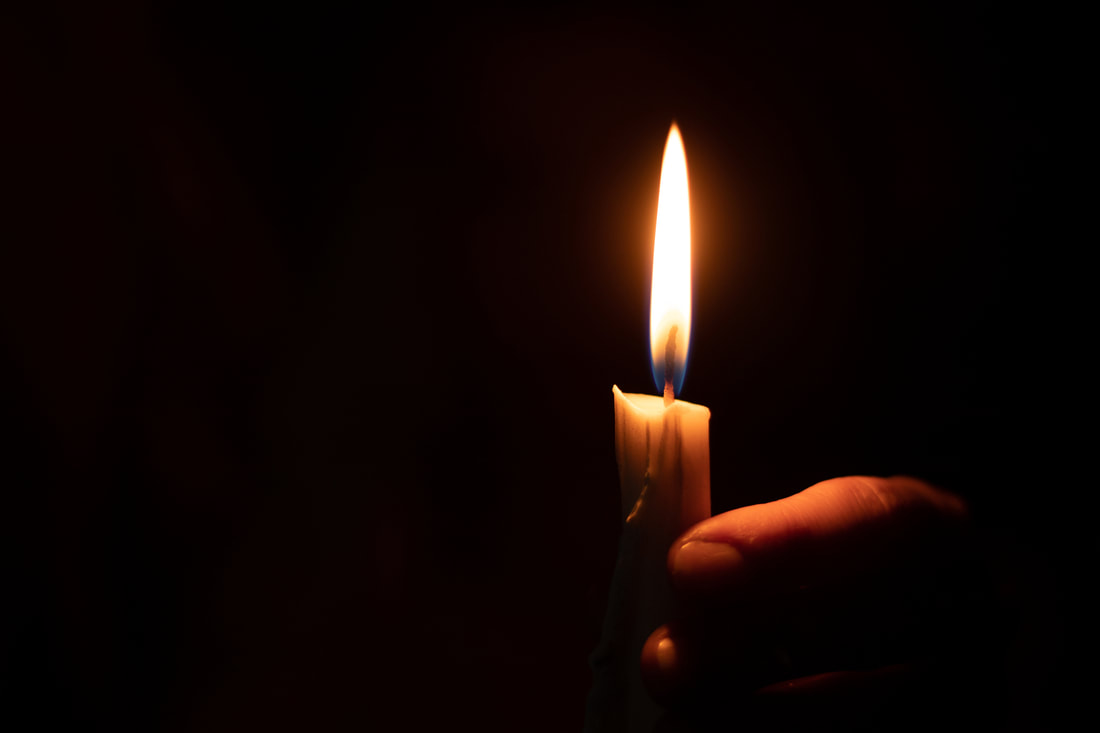

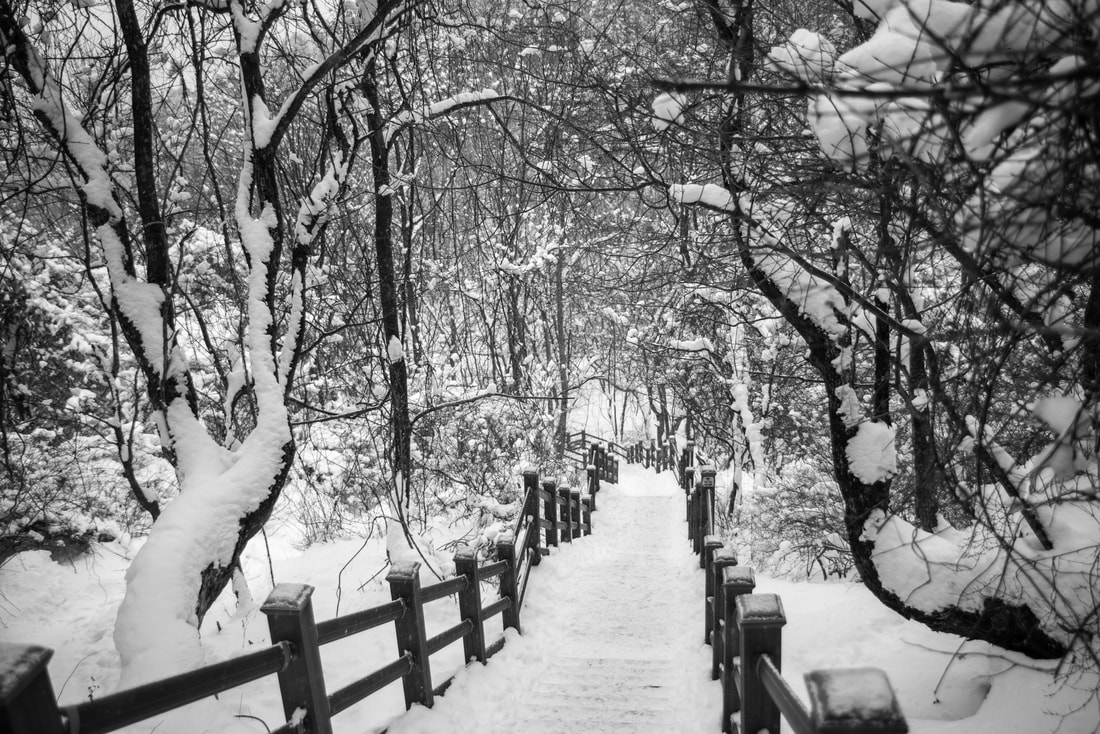
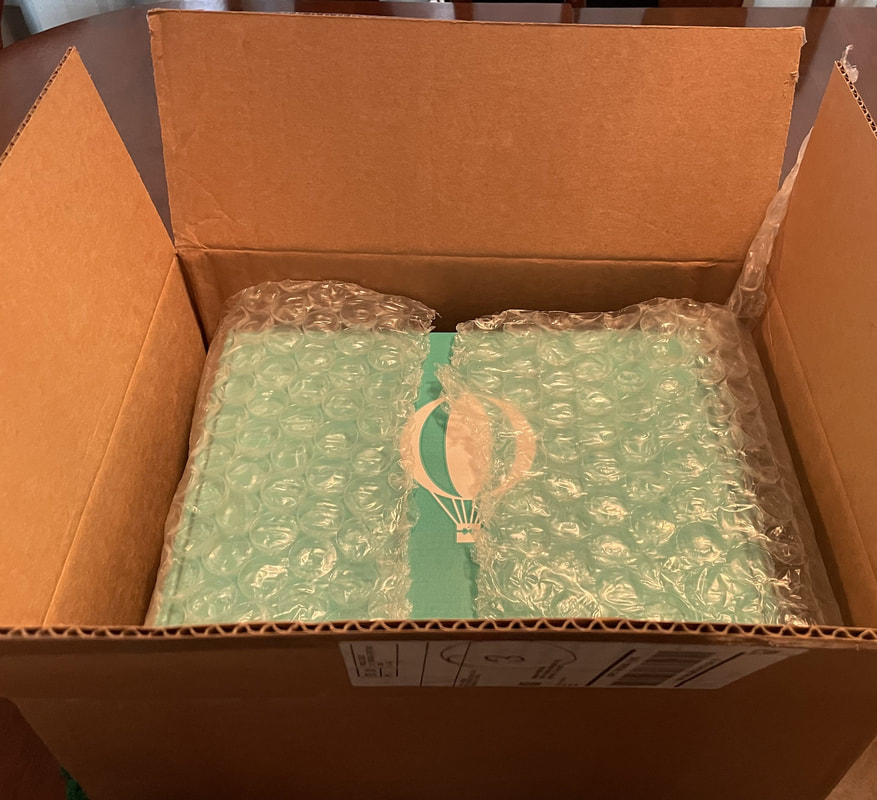
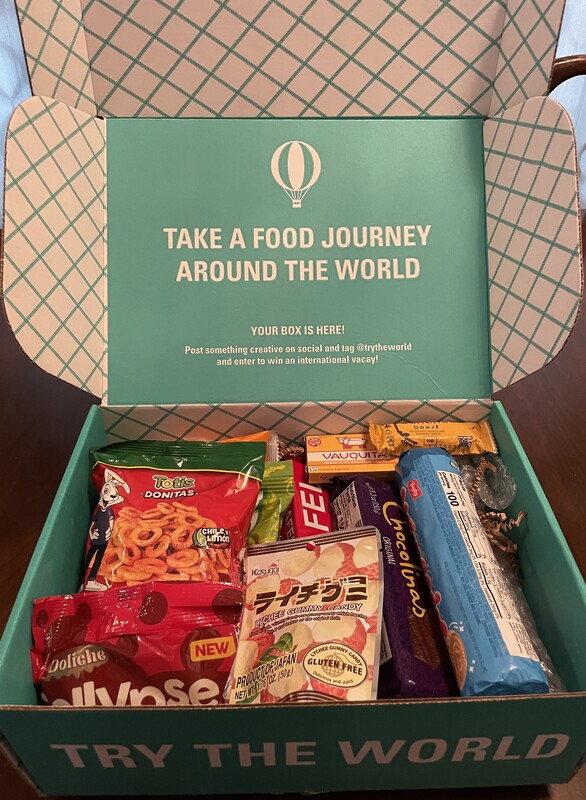




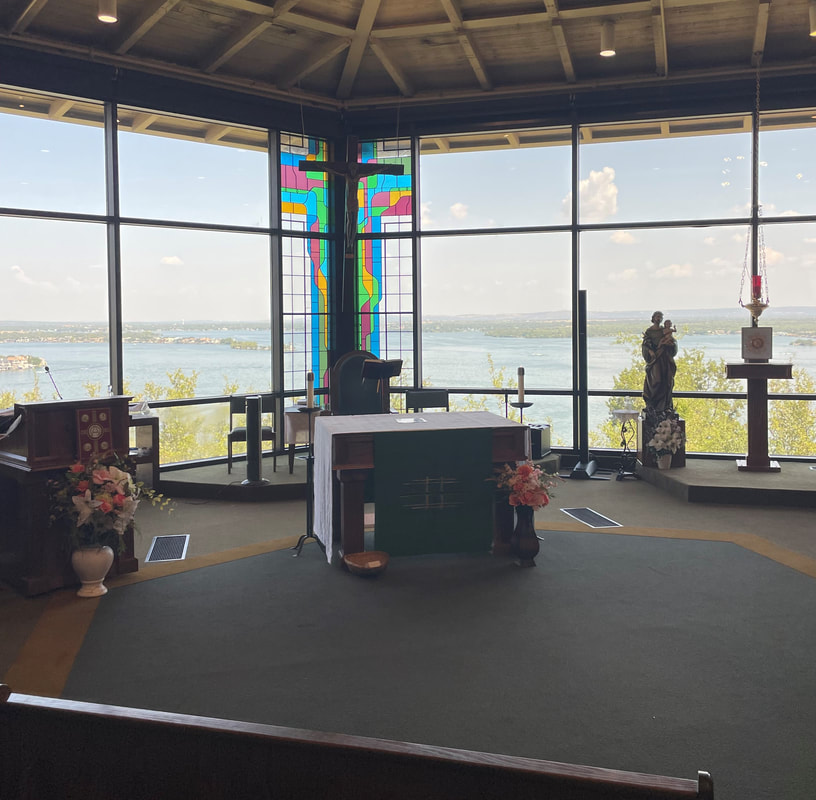





 RSS Feed
RSS Feed
